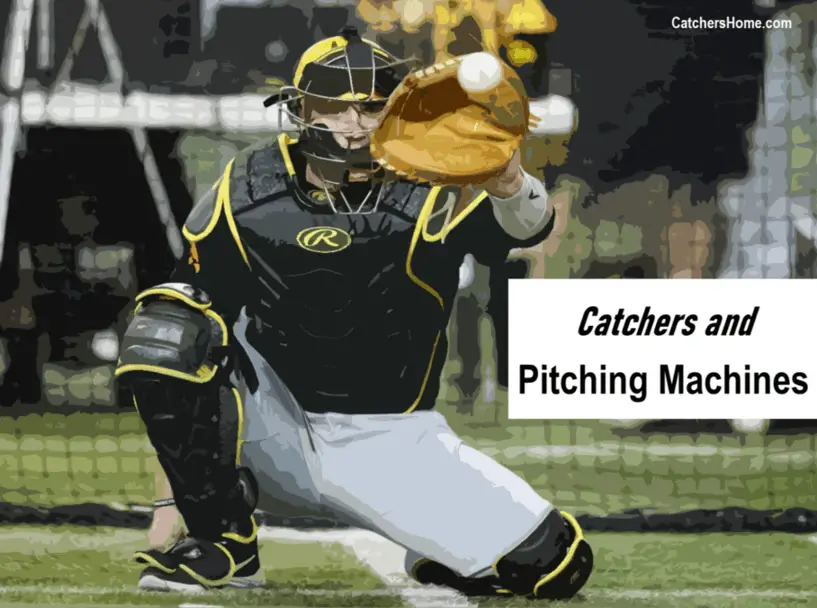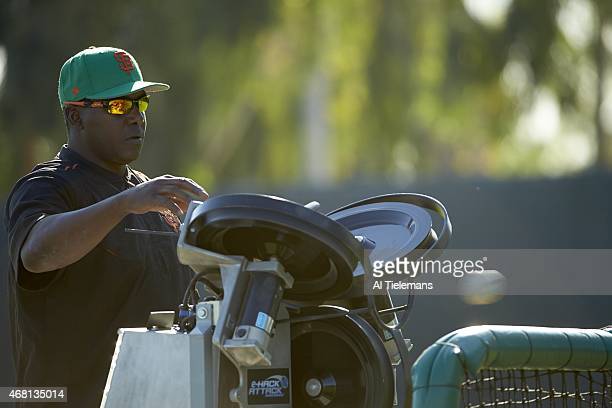
Pitching machines are incredibly versatile. They can be used for a lot other than batting practice.
For both baseball and softball catchers, pitching machines come in handy for quite a few reasons.
In this article, we discuss 5 ways that catchers can get the most out of a pitching machine and strengthen their defensive skills in the process.
5 Ways Catchers Can Use Pitching Machines to Improve Their Defense
1. Receiving
Catchers can use pitching machines to practice their receiving skills.
Simply suit up in your catcher's gear, get behind the plate, and grab a coach to feed the machine.
Since pitching machines - especially 3 wheel machines - can throw accurately consistently, catchers can relax, focus in and tweak their receiving style pitch by pitch.
An added benefit is that catchers can get this work in without using up an arm on the pitching staff, thanks to the pitching machine.
2. Framing
In addition to receiving, catchers can improve framing skills through the use of a pitching machine.
Framing - or what we like to call the art of selling a strike - is about receiving a pitch and showing it in the zone so that the umpire calls it a strike.
A coach can set up the pitching machine to deliver the ball slightly outside of the strike zone so that the catcher is forced to frame the pitch.
This drill works best when another coach is on hand to observe and tweak the catcher's approach.
Again, a benefit of using a machine for framing practice keeps the team from using up pitchers while allowing catchers to practice with realistic, fast pitching.
3. Training Mitt Reps
We've already written about the various training mitts for catchers on the market.
They are definitely useful tools in the ole toolkit.
Catchers can get some good work in with a pitching machine and a training mitt.
For example, a webless mitt can be used to practice repetitively catching the ball in the perfect spot in the pocket.
Or a weighted mitt can be used to catch pitch after pitch while building up arm and hand strength.
As we continue to harp about, this type of practice with a pitching machine is smart in that it maximizes a catcher's reps without using up a pitcher's arm.
It's a win-win: the pitching staff is kept fresh and catchers get better defensively with the help of their training mitt.

4. Blocking
One of the most important drills a catcher can do are blocking drills.
A pitching machine just so happens to be a great resource to use for these drills.
Simply set the machine to deliver a bit short which will cause catchers to go into a blocking position to stop the ball.
Then, tweak the machine horizontally to change up the ball's location. This will keep catchers on their toes, preventing them from getting complacent on these drills.
To add even more variety, switch the pitch type if you're using a 2 or 3 wheel machine. Why? Because blocking for a breaking ball is different from blocking for a fastball.
If possible, make sure a coach is helping out to advise the catcher on their blocking.
It's really helpful to get real time feedback like this.
5. Foul Pops
The most realistic way for catchers to practice catching foul pops - outside of batters actually hitting them - is by using a pitching machine.
The drill works like this:
- Catchers start in the set position
- Then the pitching machine launches the foul pop
- The catcher gets on his feet and drops his mask or helmet, finds the ball, moves to it and catches it
- Repeat.
Running the drill like this takes actual pitchers and batters out of the equation and it gets more vertical height on the ball then anyone could possibly throw it.
In short, this means that pitching machines can simulate real foul pops better than anything else other than live hitting.
Keep in mind that to do these types of drills, you need a pitching machine that can tilt itself back.
Many high quality pitching machines, such as those from a company like Sports Attack or Jugs, are able to do this with ease.
Helpful Pitching Machine Resources
Hopefully you see by now that pitching machines are a really great asset for catchers not just for offense but for defensive practice as well.
If you're interested in learning more about pitching machines, we've written a few articles on the topic that may be helpful to you.
Simply click on any of the links below for more info:
That's A Wrap!
Thanks for stopping by to read this article. We hope you found it to be helpful.
Please feel free to reach out to us if you have any questions or comments.
Scott Perry
Scott Perry is the owner and lead author at Catchers Home. He's a former baseball player, a current coach, a husband and a Dad. He remains as passionate about baseball today as he was as a kid.

